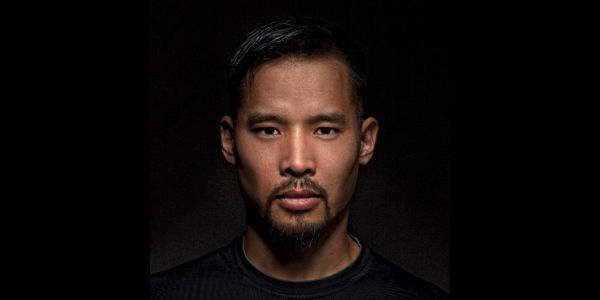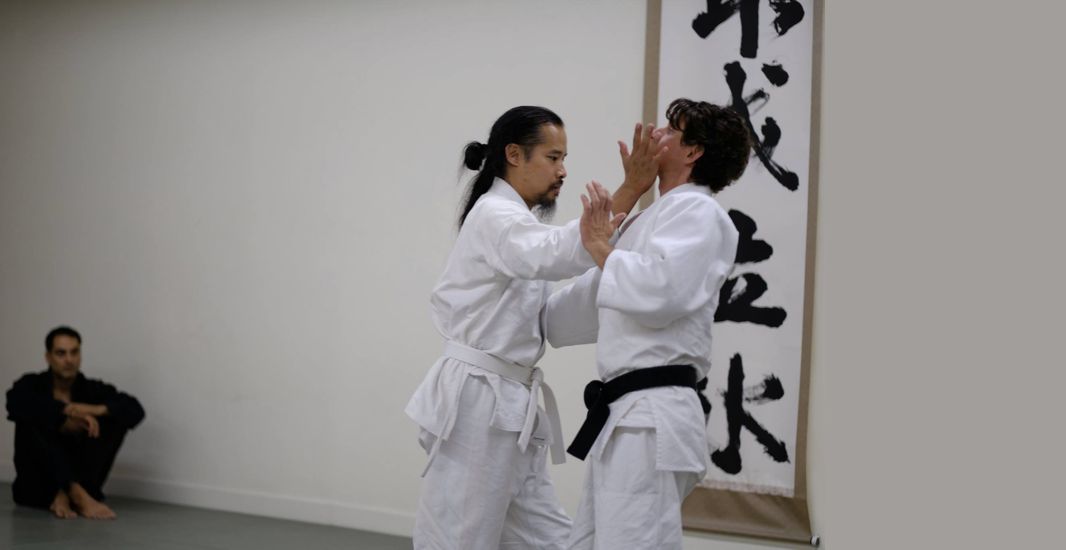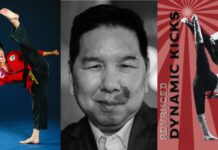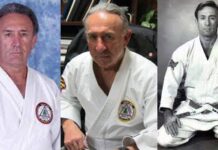 Sifu Mark Cheng, L.Ac., Ph.D., is the Head Instructor and Chief Physician for the Chung-Hua Institute of Traditional Chinese Medicine & Martial Arts Research. Dr. Cheng has been exposed to Chinese martial arts since his youth. He passionately sought to bring the finest facets of China’s traditional heritage to the world. In the course of his many years of study, Sifu Cheng realized that Chinese medicine is truly a natural, holistic, and compassionate means of treating patients, relieving suffering, and preventing disease, especially when coupled with the practice of Chinese martial arts. The traditional martial arts of China do not merely address combative skills, but also strive to build the body’s internal and external strengths. Dr. Mark Cheng has devoted his entire life to the preservation and evolution of Chinese medicine and martial arts.
Sifu Mark Cheng, L.Ac., Ph.D., is the Head Instructor and Chief Physician for the Chung-Hua Institute of Traditional Chinese Medicine & Martial Arts Research. Dr. Cheng has been exposed to Chinese martial arts since his youth. He passionately sought to bring the finest facets of China’s traditional heritage to the world. In the course of his many years of study, Sifu Cheng realized that Chinese medicine is truly a natural, holistic, and compassionate means of treating patients, relieving suffering, and preventing disease, especially when coupled with the practice of Chinese martial arts. The traditional martial arts of China do not merely address combative skills, but also strive to build the body’s internal and external strengths. Dr. Mark Cheng has devoted his entire life to the preservation and evolution of Chinese medicine and martial arts.
EARLY YEARS
Sifu Cheng was born in the United States to immigrant parents. He spent the first 17 years of his life in Delaware, a small state on the east coast. He began his informal study of martial arts with his father, Cheng Yu-Nien, around the young age of four. The course of his instruction would change to Tai-Chi six years later. Even at an early age, the young Cheng was fascinated with martial art training and this fascination only grew stronger through the years.
At the age of 18, Mark Cheng left his home state to attend the prestigious California Institute of Technology (Caltech) in Pasadena, California. He initially pursued a degree in chemical engineering. It was at the university that he met his first southern fist master, Hong Li-Rong, who would teach him parts of the Shaolin Zhiranmen (Natural style) and Fukienese Ngor Chor Five Ancestors Fist. Through a classmate in Master Hong’s class, Cheng also got introduced to Professor Daniel K. Lee, a well-known student of the late Bruce Lee and one of the true pioneers of Tai-Chi in the United States. Cheng was also able to take advantage of the opportunity to train directly with Shotokan Karate legend Tsutomu Ohshima at Caltech Dojo, the only place where Ohshima taught white-belt students.
Mark Cheng’s previous martial arts training from his father, helped him to quickly learned the Yang style Tai-Chi long form in Professor Lee’s class, much to the amazement of his peers and seniors. He also gained favor with Master Hong, and he was often sent outside the regular training room and taught away from the eyes of his classmates, which would eventually cause problems with jealousy. By the end of a year, Master Hong gave his permission for Cheng to wear a black belt to competition. Cheng would return with trophies in sparring and forms from the AAU Kung-Fu’s Los Angeles practice tournament in the summer of 1991.
By the fall of 1991, Cheng had managed to not only learn the Yang style long form, but also set up the first accredited Tai-Chi class with the Physical Education Department at Caltech. Astonished, Professor Lee commented that he’d been trying for over 15 years to get a Tai-Chi class at Caltech, and a total newcomer succeeds with a months effort. Before leaving Pasadena that winter to pursue a different course of study at UCLA, Cheng served as the assistant instructor to Professor Lee’s Caltech Tai-Chi class. Realizing that his heart and mind were better suited to a completely different field, Mark Cheng packed his bags, and gained admission to UCLA and pursued his undergraduate degree in East Asian Studies.
PREPARING FOR LEADERSHIP
During a hiatus from college study, Sifu Cheng met Sifu Andrew Ching, one of the early students of Sifu Arthur Y.S. Lee, who is the grandmaster of Sil Lum Fut Ga. Sifu Ching shared his knowledge of Sil Lum Fut Ga and introduced Mark Cheng to many of the San Francisco Bay Area’s famed Chinese martial artists, including Sifus Clarence Lee, Ming Lum, Andrew Foster, and Chi-hsiu Daniel Weng.
Weng Chi-hsiu was a student of the legendary Ch’ang Tung-Sheng, who was an undefeated fighter and the acknowledged “King of Shuai-Chiao”. The Shuai-Chiao system had grappling and powerful throwing techniques that weren’t emphasized in Cheng’s earlier training, and he quickly accepted Weng’s offer to train him. Later that summer, Weng stayed with his new student on a visit to Los Angeles, where they tried to muster support for the fledgling USA-Wushu Kung-Fu Federation. The two spent time training on the dry dirt Intramural Field at UCLA. It was on the hard field surface that Cheng learned the importance of proper breakfalling. By 1997, Cheng earned his black belt and became an active national level Shuai-Chiao and Sanshou referee under Dr. Weng and during this time, Cheng introduced Dr. Weng to Los Angeles area martial artists such as Burton Richardson, Mark Stewart, the late Ted Lucaylucay, and Daniel Yu Wang.
During his years of study at UCLA, Sifu Cheng created and led the UCLA Kuoshu Club, later to become the UCLA Kung-Fu class. His class was to become one of the most popular on campus, with enrollments rivaling those of the ever popular Taekwondo club. With a ferocious workout that left even the hardiest athletes drenched in sweat and a well-rounded combat curriculum that drew students from other clubs, Sifu Cheng’s class gave him a foothold from which he would leap into the martial arts spotlight. At this time Cheng founded the Chung Hua Kung-Fu & Tai-Chi Institute, which was made up of his students from around southern California.
With a growing knowledge of traditional Chinese martial arts, Cheng set out to delve deeper into the theories and history that gave such depth to the arts. For his senior thesis project, he interviewed internal stylist Master Daniel Yu Wang of Beijing on an oral biography of Yang Lu-Chan, the founder of Yang style Tai-Chi. He also helped translate several essays for Master Wang, which have been published in Inside Kung-Fu and another Tai-Chi compilation text. With Master Wang’s theories and his own “hard knocks” experimentation, Sifu Cheng would re-interpret the applications of the Yang style Tai-Chi form that Professor Daniel Lee had taught him years earlier, with radically different results. He also translated some notes made by Master Vincent Chao-ling Hwang and spent time at his house discussing certain Tai-Chi theories and playing hands.
The results of those hours of hard practice and investigation became the “Combat Tai- Chi” video series, produced by Inside Kung-Fu Magazine and CFW Enterprises. Cheng had sworn that while his first Yang style teacher, Prof. Daniel K. Lee, was still alive, he would not make an instructional video series on the Yang style form. Instead, Cheng chose to focus on the real-time combat applications of each move in the form, examining each technique in depth and carefully explaining the logic of full-body combat as contained within the Yang style long form.
This opened up a whole new door for Tai-Chi practitioners, showing them that Tai-Chi fighting was far more than just the “push & shove” techniques that they were used to seeing. In a society that was used to seeing geriatric or New Age Tai-Chi practitioners, Cheng’s Combat Tai-Chi series put the teeth back in the tiger and established Cheng as one of the youngest authorities on Tai-Chi in the United States of America.
In addition to his video series, Sifu Cheng was often asked to write articles. He and his writings have appeared in Black Belt Magazine, Inside Kung-Fu, Martial Arts Training, Martial Arts Legends Presents, and Martial Arts & Combat Sports. He also writes for USADOJO.COM. He also began traveling for seminars, going to South Africa in 1997 at the invitation of Master Darryl Grauman where he taught 2 weeks worth of non-stop seminars with close friend, Dr. T.J. Obi-Desch, an African martial arts researcher, championship competitor, and student of legendary Capoeira Angola mestre, João Grande.
MASTERY FOUND
During these years, Sifu Mark Cheng had learned from many different teachers, cross referencing the material from the different styles and schools to better understand the evolution of the styles that made up his study. However, he longed to find a teacher that would embody all the qualities that made up his childhood ideal of a martial arts master. He found that teacher in the head of the American Combat Shuai-Chiao Association, David C.K. Lin.
Cheng began to distance himself from Dr. Weng and the US Shuai-Chiao Association due to personal differences between Weng and his son. Soon afterwards, however, Cheng met James Lin, the elder son of Master David Lin, who had relocated to Los Angeles from Atlanta to pursue an engineering career with Hughes’ digital satellite systems department. This chance meeting gave Cheng new enthusiasm for Shuai-Chiao, as Lin’s teachings were technically closer to the direction that Cheng himself wznted to go. Prior to Master Lin, Cheng had never seen a Chinese martial artist who clearly showed an understanding of how to combine the full gamut of kicks, punches, locks, and throws in a logical, effective manner. In addition, the Lins were able to convincingly deliver their theory in a full-contact manner without so much as a missed step.
On a human level, Cheng knew he’d found something very special. The Chinese say that one can see the quality of a man through his son. James Lin would drive half an hour to West Los Angeles, where Cheng and some of his students trained privately, to join in the workouts and generously share his father’s knowledge. He had no compunction about training with everyone else, and regularly let even the beginners throw him to assure they were using proper technique. Outside of the training hall, James became a loyal friend, much like a brother that Cheng never had. James soon introduced his father to Cheng, who, after long hours of conversation, accepted him as a student. The rest, as they say, is history in the making.
Master Lin struck was to Cheng, everything a master should be: a tremendous technician, a proven fighter in Taiwan, a loyal student to Grandmaster Ch’ang Tung-Sheng, a loving father to his sons, a loyal husband to his wife, a hard-working entrepreneur, an eloquent instructor, and an honest man. On his regular visits to see his son, James, Master Lin made time to share his story and his art with Sifu Cheng.
THE PRESENT
Sifu Mark Cheng now teaches the Yang style Tai-Chi form in West Los Angeles, Santa Monica, and in the Pacific Palisades. Cheng studies Combat Shuai-Chiao with the Lin family and Sil Lum Fut Ga with the Lee family. The bulk of Cheng’s teaching is on a private / semi-private basis, through seminars with other martial arts schools, or with select groups of law enforcement or military groups for Combat Shuai-Chiao. In September 2005, he was annointed as the Sifu of the Los Angeles branch of Gee Yung Sil Lum Fut Ga. He also co-authored a new Hwa Rang Do textbook with Chiefmaster Taejoon Lee, released by Black Belt in Fall 2005. The first printing of the book sold out in one month.
In addition to his writing duties for martial arts publications around the world, Cheng is also a Chinese medicine researcher and licensed acupuncturist, specializing in Tui-Na therapies. With Dr. Jae-Man Kim (founder of the World Tui-Na Association and Shippalgi martial arts instructor from Korea), Sifu Cheng put together the www.tui-na.com site to open peoples’ minds and eyes to the power of Tui-Na medicine. He served as disciple candidate to Dr. Jae-Man Kim, working to inherit Dr. Yu Da-fang’s formidable Tui-Na lineage, directly under Dr. Kim’s tutelage.
In late 2003, Sifu Cheng opened his own practice in Beverly Hills. He works in conjunction with renowned Professor Xiuling Ma at the Acu-Herbal Medical Arts Clinic as Tui-Na orthopedics & sports medicine specialist. With the explosive growth of his practice, Sifu Cheng was forced to look for clinic space again, finally relocating to the current location across from the Santa Monica Airport in the spring of 2004. In his private practice, Sifu Cheng has continued to flourish. In the summer of 2004, he accepted a faculty position to teach Tui-Na at Emperor’s College, and in the fall of 2004, Yosan University followed suit. Sifu Cheng holds a doctorate degree in Acupuncture and Oriental Medicine, with a highly commended dissertation on the treatment of migraine headaches through Oriental structural medicine.

To contact Mark Cheng and Kettlebells Los Angeles visit his listing on the Martial Arts Schools and Businesses Directory by clicking on the image on the left.






